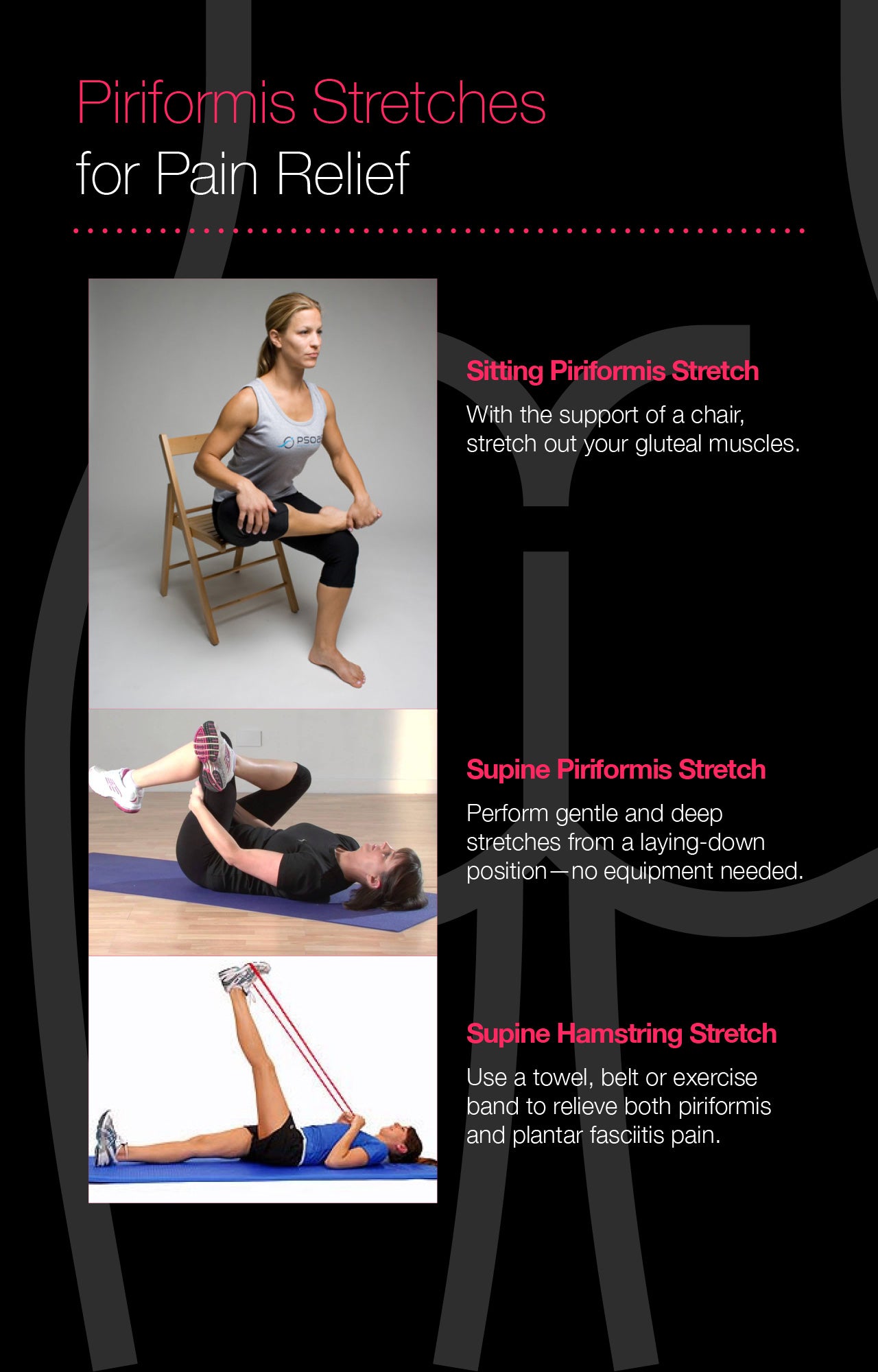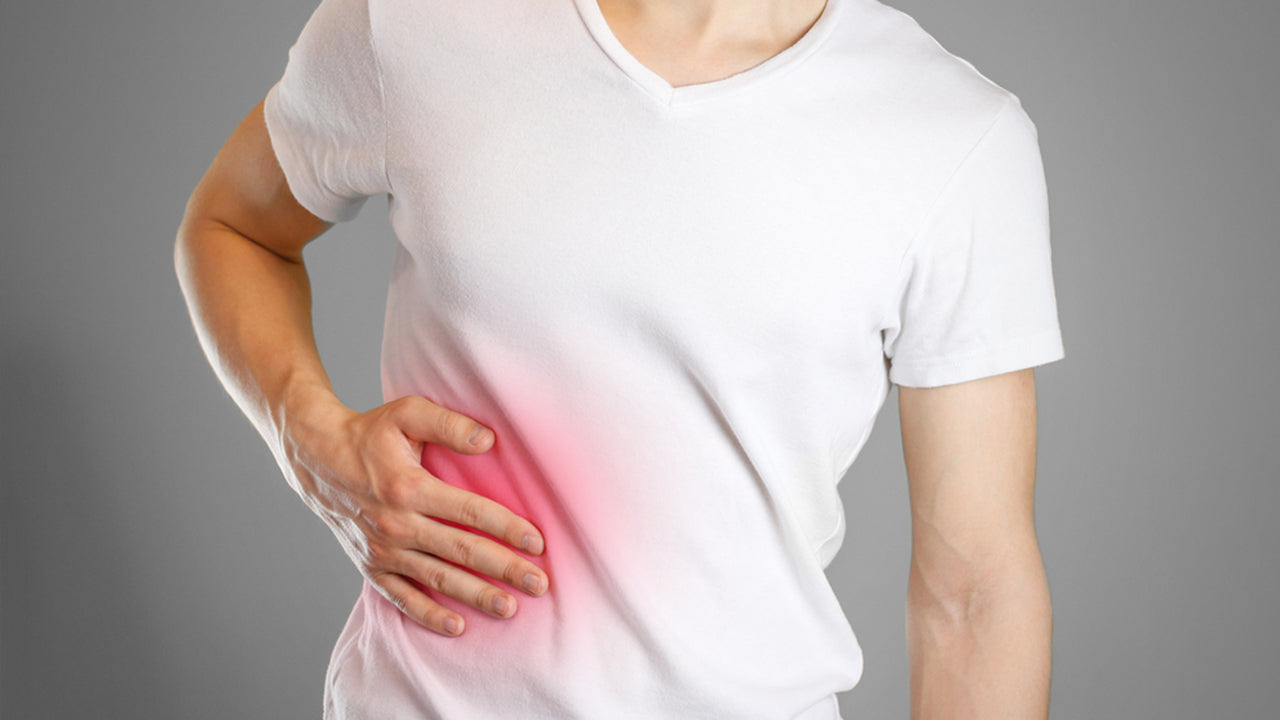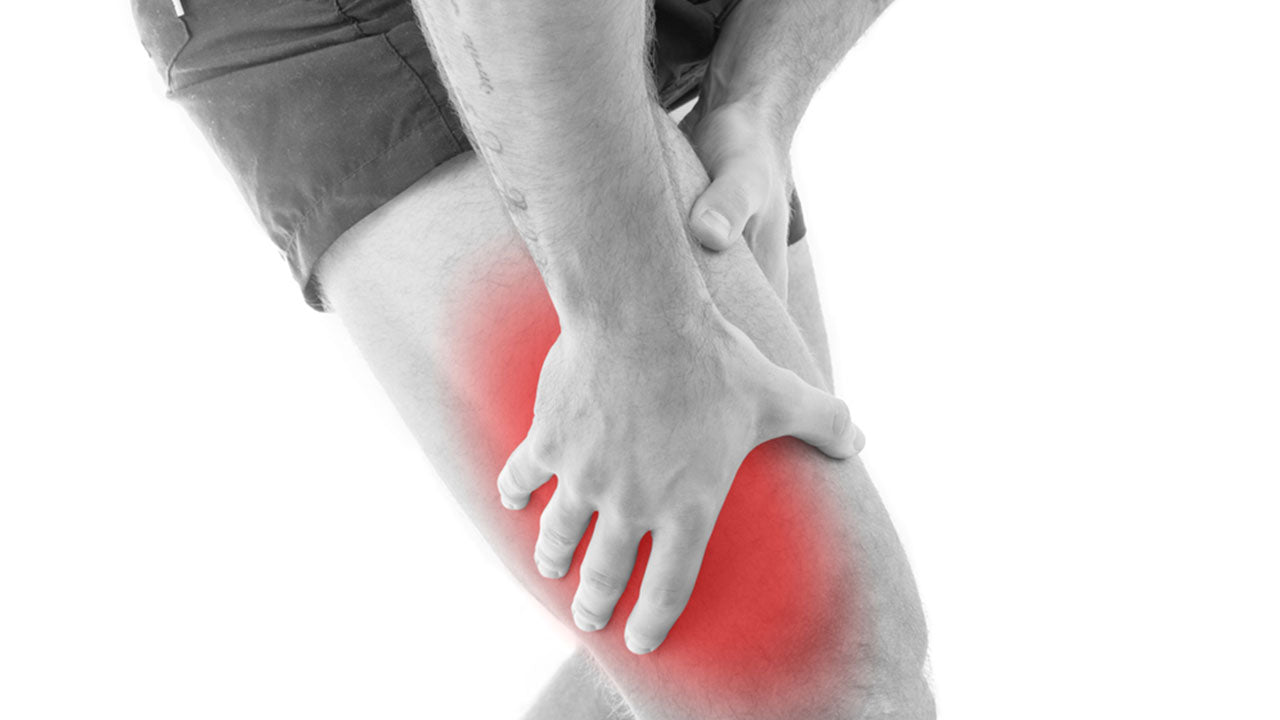The Piriformis Stretch to Help Relieve Lower Back Pain and More
 By: by Amino Science
By: by Amino Science

The piriformis muscle sits right alongside your sciatic nerve, and for this reason could be the cause of referred pain in your lower back and hips. We're covering the anatomy of the region, the causes and symptoms of piriformis syndrome, and exploring three different versions of a piriformis stretch that may offer immediate relief for your pain and stiffness.
Where Is the Piriformis Muscle?
Located underneath your gluteus maximus muscles in the buttocks, the piriformis muscles originate at the lower spine and connect to the upper portions of the femur bones (thighbones). The piriformis muscles are one of our hip rotators, allowing us to turn the leg and foot outward.
The sciatic nerve runs through and beneath the piriformis muscle, and if the piriformis muscle spasms, swells, or otherwise compresses the sciatic nerve, it can cause severe sciatica-like back and lower-body pain. This condition, known as piriformis syndrome, is not true sciatica because it does not involve the spine directly.

Piriformis Syndrome: Causes and Symptoms
Lower back, buttock, and sciatica pain are often caused by spinal issues, but when the spinal column is not involved, there are many other potential culprits. Bruising to the area, bursitis (irritation of the bursae sacs that cushion many of our joints), muscle strains, arthritis of the sacroiliac joints, and cancer can all cause issues and pain in the lower back and hip region.
Piriformis syndrome can develop due to overuse, strain, or injury that causes the piriformis muscle to spasm, tighten, or swell. Soccer, tennis, and football players, cyclists, long-distance runners, and other sports enthusiasts who repetitively engage the legs and hips may experience higher instances of piriformis issues.
Stay alert to potential symptoms of piriformis syndrome, including:
- Pain and tenderness in the buttocks area
- Sciatica-like numbness, pain, or weakness running from the lower back down the underside of the leg
- Worsening pain when walking, running, sitting, or climbing up steps or uphill
Piriformis causes of discomfort can easily be mistaken for a low-back or spinal problem due to the radiating nature of pain coming from the sciatic nerve. While piriformis syndrome as a disorder is hard to pin down as a diagnosis, it is nevertheless recognized that the piriformis muscle can cause debilitating back, pelvic (the sacrum), upper leg, and lower leg pain.

Diagnosing Piriformis Syndrome
Piriformis syndrome is usually diagnosed after other potential causes have been eliminated. There is no one definitive test for this condition. Your health care provider may order an MRI or CT scan to check for possible soft tissue injuries, an X-ray to rule out bone issues, and an electromyography or EMG test to asses the electrical activity of muscle tissues. These tests effectively disqualify other diagnoses until piriformis syndrome is the last condition standing.
If you're experiencing sciatica pain, it's important to check for conditions like a herniated disc or other spinal issues such as spinal stenosis or lumbosacral spondylolisthesis. Should there be no evidence of spinal involvement and no soft tissue obstructions like tumors or cysts, you're likely suffering from piriformis syndrome, which is much easier to treat with simple piriformis muscle stretches.

Piriformis Stretches for Pain Relief
Taking a cue from sports medicine, we've put together some safe piriformis syndrome exercises that can help loosen up a tight piriformis muscle. These stretches may even bring you instant pain relief and restore your range of motion.
1. Sitting Piriformis Stretch
- Find a stable seat or chair.
- Place your right ankle over your left knee.
- Next, place your right hand on your right knee and left hand on your right foot.
- With a straight posture, lean your upper body over your legs. You should immediately feel the stretch in your right buttock.
- Hold for 30 seconds, and then repeat on the opposite side.
2. Supine Piriformis Stretch
- Place a mat on the floor and lie down on you back.
- With both knees bent and both feet on the floor, lift your right leg and cross your right ankle over the opposite knee.
- Using your hands to support both your knee and ankle, draw your left leg towards your chest to engage a stretch all through your buttocks and back.
- You can also loop your hands through and pull the propped left leg forward to take the stretch even deeper. Start with a hold of 5 seconds and increase to a hold of 30 seconds as you limber up.
- Repeat on the other side.
Another variation of the supine stretch (if you find it too hard on the hip joint) is to return to the original starting position, and instead of crossing the right leg or the left leg, simply put your hands behind the knee and pull to your chest for a gentler hip stretch.
Perform these stretching exercises 3 times a day until your hip or low back pain is gone.
3. Supine Hamstring Stretch
- Find a towel, belt, robe tie, or exercise band to execute this stretch.
- From the same starting position as the supine piriformis stretch, place the strap over the ball of one foot (just beneath the toes).
- Straighten that knee, and then use the strap to gently apply tension as you raise your leg so the bottom of your foot is parallel to the ceiling.
- Again, start by holding for 5 seconds at first and increase to 30 seconds as you become more flexible.
- Perform this stretch 3 times daily to activate healing.
This full-leg stretch is good not only for relieving sciatic pain, but also for treating foot tendonitis and plantar fasciitis pain. If you're interested in this stretch purely to help relieve plantar fasciitis, remember to stretch not just the affected leg, but both legs so that your body doesn't become imbalanced.

Other Treatments for Piriformis Syndrome
In the pursuit of pain relief, you may also want to try the following treatment options.
- Amino acid supplementation: In any instance of healing muscle, amino acids supply the necessary ingredients to repair and replace muscle cells that are in need of help, which is often the case in situations of injury and inflammation. We recommend our injury-recovery blend, Heal.
- Professional physical therapy: If it's available to you, professional guidance from a physical therapist, therapeutic massage, and personal training can teach you proper stretching form and help get you past the first phase of pain and discomfort caused by a tight piriformis muscle.
- Medications: Over-the-counter NSAIDs (nonsteroidal anti-inflammatory drugs), corticosteroid injections from a doctor, or opioids if the pain is extremely severe could be options, particularly if you are experiencing sciatic pain. Natural anti-inflammatory supplements may also help and are certainly much healthier for you and your detox organs (the liver and kidneys).
- Acupuncture: The ancient remedy of stimulating the body's trigger points can help relieve tension and referred pain coming from other parts of the body.

Piriformis Stretch Therapy and Prevention
Whether your pain is coming from a temporary injury or piriformis syndrome due to overuse, piriformis stretches can not only help loosen your gluteal muscles, but also relieve and prevent future back and sciatic pain. Let us know how these stretches worked for you in the comments below!

Up to 25% off Amino
Shop NowTAGS: injury
Join the Community
Comments (0)
Most Craveable Recipes




 833-264-6620
833-264-6620



















